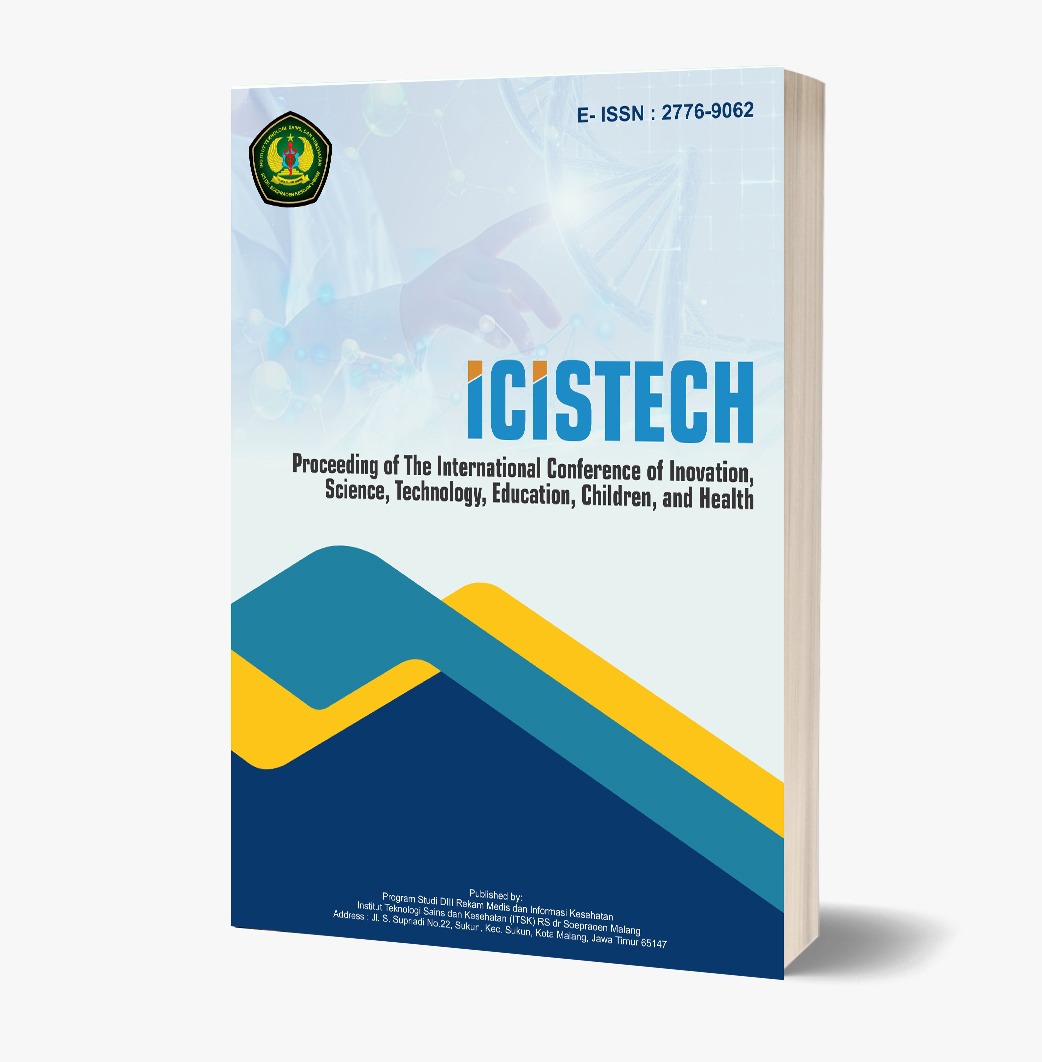The Relationship Between Early Marriage and The Incidence of Retained Placenta
DOI:
https://doi.org/10.62951/icistech.v5i1.200Keywords:
Age, Delivery, Maternal, Mortality, RetentionAbstract
According to the World Health Organization (WHO), in 2015 the global maternal mortality rate (MMR) reached 303,000 deaths. In Indonesia, the MMR for the same year was 305 maternal deaths per 100,000 live births, significantly higher than the national target of 75 per 100,000 live births. The top five causes of maternal death in Indonesia include hemorrhage (30.3%), hypertension in pregnancy (27.1%), infection (7.3%), prolonged labor (1.8%), and abortion (1.6%). One complication that can contribute to maternal morbidity and mortality is placental retention, a condition in which the placenta fails to be delivered within 30 minutes after childbirth. In 2016, 51 cases of placental retention were reported in the study area, raising concerns about its prevalence and contributing factors. This study aimed to determine the relationship between maternal age and the incidence of placental retention. An analytic survey method was applied using secondary data, with a total population of 398 mothers and a sample of 80 respondents selected through purposive sampling. Data analysis employed chi-square testing. The findings revealed that the majority of respondents were not in the at-risk age group (61 respondents or 76.2%), and most did not experience placental retention (64 respondents or 80%). However, statistical analysis demonstrated a significant relationship between maternal age and placental retention, with a p-value of 0.001, indicating that age is a contributing factor. In conclusion, maternal age plays a significant role in the occurrence of placental retention, emphasizing the importance of adequate maternal health education, early antenatal care, and close monitoring during delivery, especially for those in high-risk age categories. Targeted interventions to address age-related risks may help reduce maternal complications and contribute to lowering the maternal mortality rate.
References
Barlow, A., & Zhou, D. (2022). Early marriage and its effect on maternal health outcomes: A systematic review. Journal of Women's Health, 31(1), 45-54. https://doi.org/10.1016/j.jwh.2021.10.010
Darmlayanti. (2013). Faktor-faktor yang berhubungan dengan kejadian retained placenta di RSUD Dr. H. M. Lolch Ansari Salekh Banjarmasin.
Endang, & Zaul, E. (2011). Hubungan umur dan paritas ibu dengan kejadian retained placenta di Puskesmas Jagir Surabaya.
Hidayat, A. A. (2010). Metodologi penelitian kebidanan dan teknik analisis data. Jakarta: Salemba Medika.
Kementerian Kesehatan RI. (2016). Profil Kesehatan Indonesia 2015. Retrieved from http://www.kemkes.go.id
Khairunnisa, R. H., & Aulia, F. (2022). The effect of socioeconomic status on the incidence of retained placenta. BMC Pregnancy and Childbirth, 22(1), 103-110. https://doi.org/10.1186/s12884-022-04506-w
Kholtijah, dkk. (2014). Hubungan usia dan paritas dengan kejadian retained placenta pada ibu bersalin.
Mohamad, R., & Lee, W. (2020). Management of retained placenta in obstetric care. International Journal of Obstetric Medicine, 40(2), 101-107. https://doi.org/10.1056/ijom.2020.00123
Molochtar. (2011). Sinopsis obstetri jilid 1. Jakarta: EGC.
Noltolatmoldjol, S. (2010). Metodologi penelitian kesehatan. Jakarta: Rinekha Cipta.
Putri, D., & Maheswari, L. (2021). The prevalence of retained placenta and maternal outcomes in Indonesia: A cross-sectional study. Indonesian Journal of Obstetrics and Gynecology, 29(3), 187-193. https://doi.org/10.1016/j.ijog.2021.04.011
Rachmawati, H., & Hasanah, N. (2020). Pregnancy outcomes of women married at an early age in Southeast Asia. Asian Journal of Obstetrics and Gynecology, 26(2), 215-220. https://doi.org/10.1016/j.ajog.2020.04.015
Rulkiyah, A., Yelyelh, dkk. (2010). Asuhan Kebidanan 4 (Patologi Kebidanan). Jakarta: Trans Info Medika.
Seltiawan, A., & Saryolmol. (2011). Metodologi penelitian kebidanan. Yogyakarta: Nulha Medika.
Wang, Y., & Zhang, L. (2020). Epidemiology of retained placenta in postpartum women: A global overview. Reproductive Health, 17(1), 32-40. https://doi.org/10.1186/s12978-020-0900-0
Wawan, A., & Delwi, M. L. (2011). Teori & Pengukuran Pengetahuan, Sikap dan Perilaku Manusia. Yogyakarta: Nulha Medika.
WHO. (2013). Trends in Maternal Mortality. Retrieved from http://www.iniscolmlmlunication.com
Downloads
Published
How to Cite
Issue
Section
License
Copyright (c) 2025 Proceeding of The International Conference of Inovation, Science, Technology, Education, Children, and Health

This work is licensed under a Creative Commons Attribution-ShareAlike 4.0 International License.













